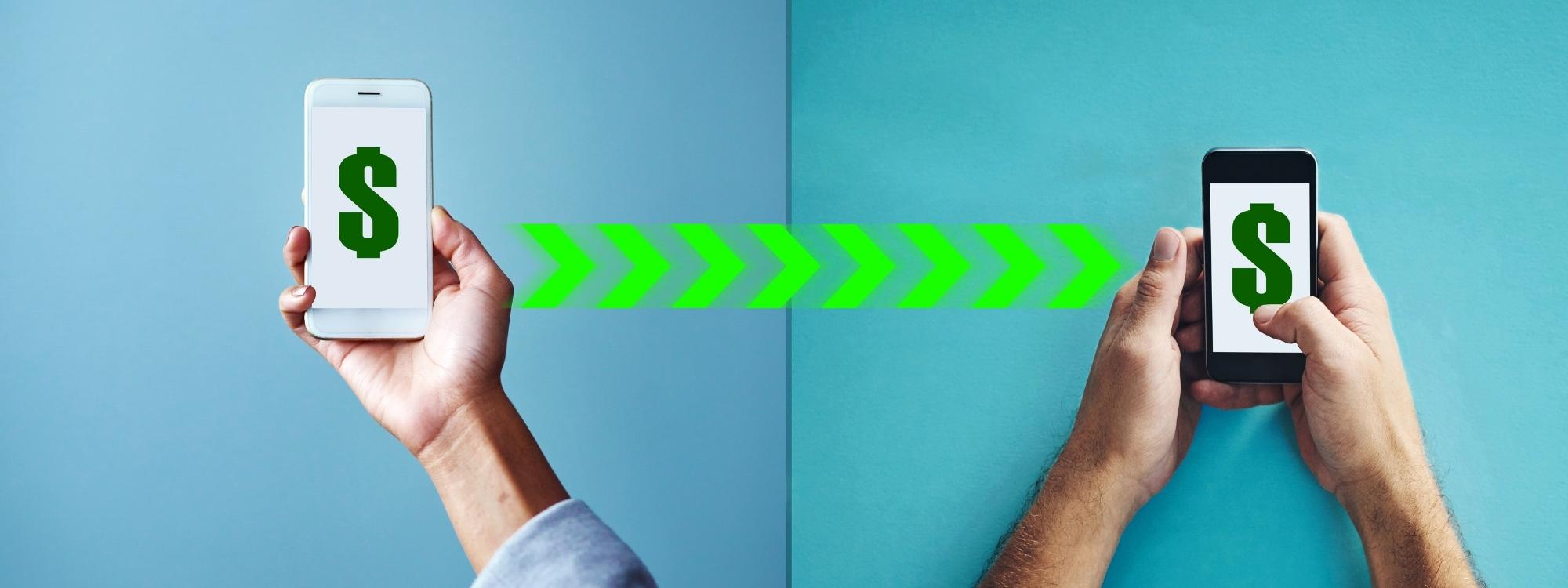
Peer-to-Peer (P2P) Payment Systems
Section Menu
Peer-to-Peer (P2P) payment systems let you use your First National Bank account or debit card to send money to others using your mobile device.
P2P payment systems are a convenient replacement for cash payment and they can be used to send money to your family, split rent and utilities with friends, or pay bills faster and more easily than traditional payment methods like bank transfers.

How P2P payments work
Let's say you're out to dinner with your best friend, Nathan, and want to split the check. Instead of fumbling around for bills and coins to pay Nathan, you use your P2P payment app. You take out your phone and open your P2P app of choice. Pick Nathan from your contact list, type the amount you want to send him, and voila - you've paid Nathan for your share of that delicious steak dinner. If you have a PIN set up, depending on the app you're using, you'll need to enter it to complete the payment.
Once Nathan receives the money, he can leave it in his P2P account for the next time he wants to make a payment, or he can transfer it to his bank account.
Here's a list of the steps to get started:
- Select and download a P2P payment app from your app store. Common P2P payment apps include Venmo, Cash, Google Pay, and PayPal.
- Link your account. After you download and sign up for a P2P payment app, link your First National Bank account or debit card to the app. Some apps may require further verification information and passwords to increase security, and possibly your account number and bank routing number (073902274). But once your account is set up, you can find other users by their username, email or phone number.
- Send money. Sending is usually just a couple of clicks away after your account is established. You choose who you are sending money to, the amount of the transaction, add a reason for the payment, then submit the payment. Enter data carefully. If you mistype a recipient's email address, phone number or name, the money could go to the wrong person. Double-check your recipient information closely before you send a payment.
- Transferring and receipt of funds. Depending on your P2P payment app, the time it takes for money to transfer varies. It can range anywhere from a few seconds to three business days. Many platforms keep the money stored in the app until you manually release it into your personal banking account. Some providers also offer instant transfers for a fee.
Paying may cost you
Generally speaking, you can make P2P payments from a linked bank account or straight from the P2P account for free. However, some providers charge fees - 2% or more - to process payments drawn from a credit or debit card.
Don't become a victim of P2P payment fraud
Although all of the major P2P systems encrypt or shield your financial information, some systems have been subjected to hacks and scams in the past. That's why most apps have fraud monitoring and support teams to help resolve unauthorized transactions, and use passwords, PINS, and transaction notification systems.
Carefully review your app provider's security procedures and fraud policies.
Here are some tips to help prevent you from becoming a victim of P2P payment fraud.
- Never send money to someone you've never met in person.
- Confirm the username and phone number of the person you are sending money to.
- Always opt-in for multi-factor authentication, like a PIN or facial recognition.
- Write down the Customer Service number for the app you are using in case you have a dispute.
- Make sure your P2P app is up to date; and turn your auto-updates on your device. Hackers are always working to exploit security vulnerabilities.
- Set up transactions alerts so you are notified immediately anytime your account is used.
- Consider linking your credit card instead of your debit card. If your payment is funded by a credit card, you may be able to get your card issuer to refund it. By law, credit cardholders who have made payments in error are liable for no more than $50.
- Be wary of sending large amounts.
- Do not let a stranger use your phone.
- If you believe you have been scammed or fallen victim to fraud, report it to local law enforcement and the Consumer Financial Protection Bureau's Consumer Complaint Database.